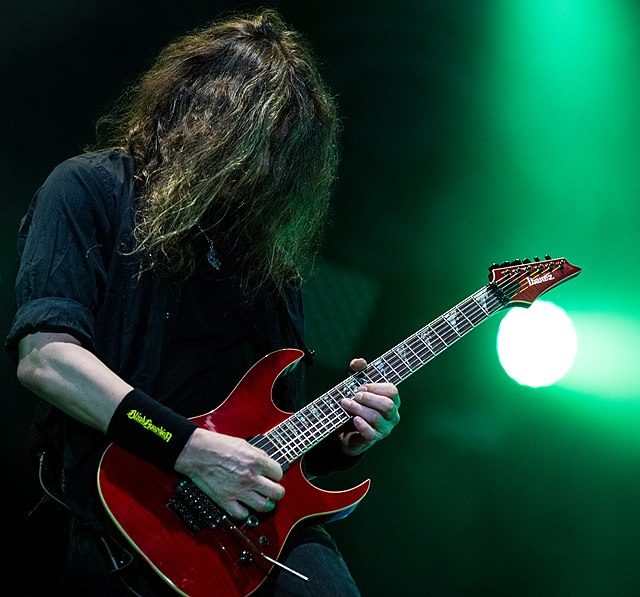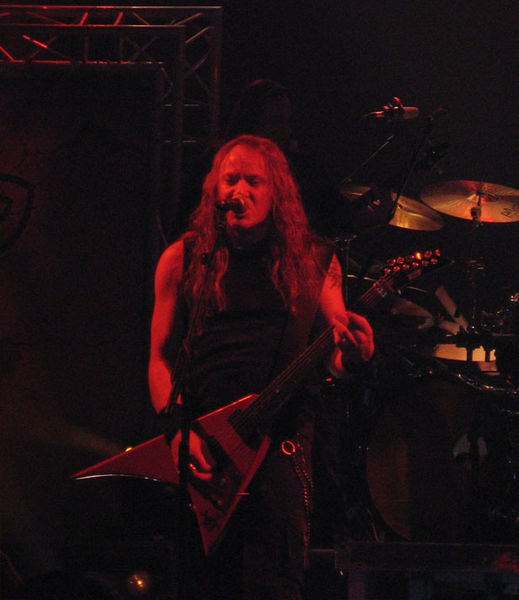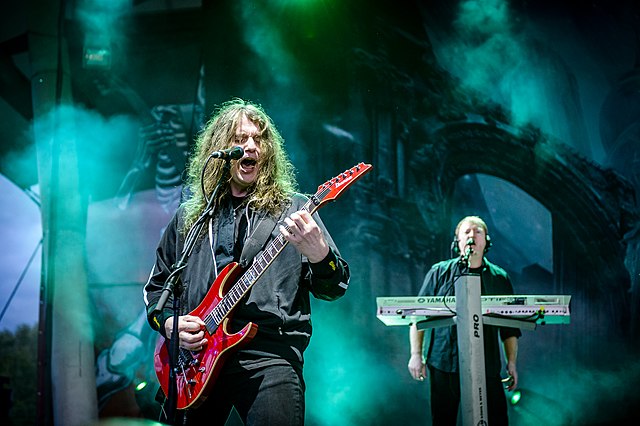Kai Michael Hansen is a German musician who is the founder, lead guitarist and vocalist of power metal band Gamma Ray. He is also one of the co-founders of another power metal band Helloween, which he was a part of from 1983 to 1989 and rejoined in 2016. He is a prominent figure in power metal and has sold millions of albums worldwide. He is regarded as "the godfather of power metal", having founded two seminal bands in the genre. In 2011, he joined the band Unisonic featuring former Helloween vocalist Michael Kiske. Hansen and Kiske reunited with Helloween in 2017 for a world tour with all current members, celebrating the 30-year anniversary of release of the albums Keeper of the Seven Keys Parts I and II.
Hansen performing in 2008
Tuska Open Air Metal Festival 2005
Power metal is a subgenre of heavy metal combining characteristics of traditional heavy metal with speed metal, often within a symphonic context. Generally, power metal is characterized by a faster, lighter, and more uplifting sound, in contrast with the heaviness and dissonance prevalent in, for example, extreme metal. Power metal bands usually have anthem-like songs with fantasy-based subject matter and strong choruses, thus creating a theatrical, dramatic and emotionally "powerful" sound.
Power metal
Kai Hansen of Gamma Ray during a show in Barcelona. Hansen is regarded as one of the biggest influences in the early development of power metal.
Most songs of German band Blind Guardian are based on fantasy, mythology and science fiction, and their live shows often feature fantasy decorations.
Italian band Rhapsody of Fire performing in Buenos Aires in 2010






